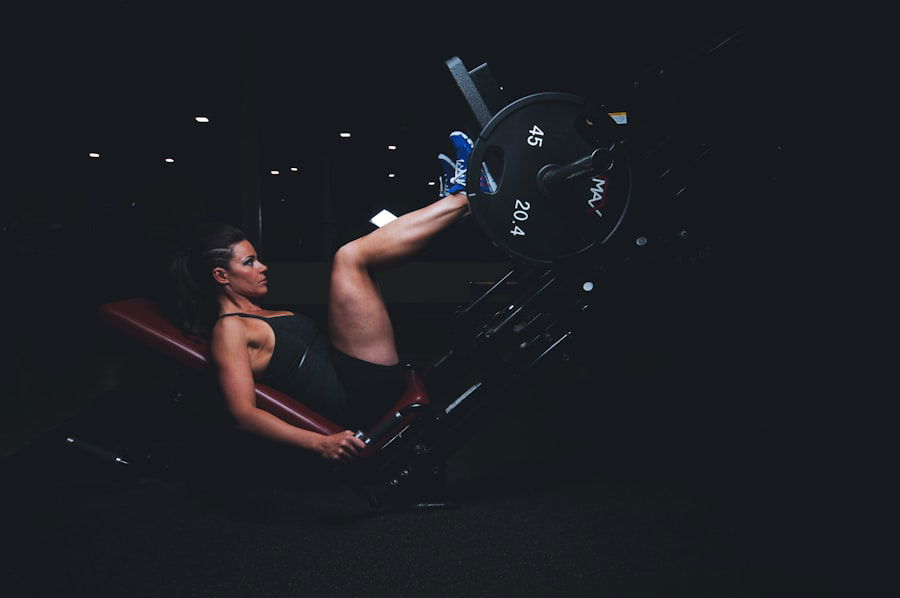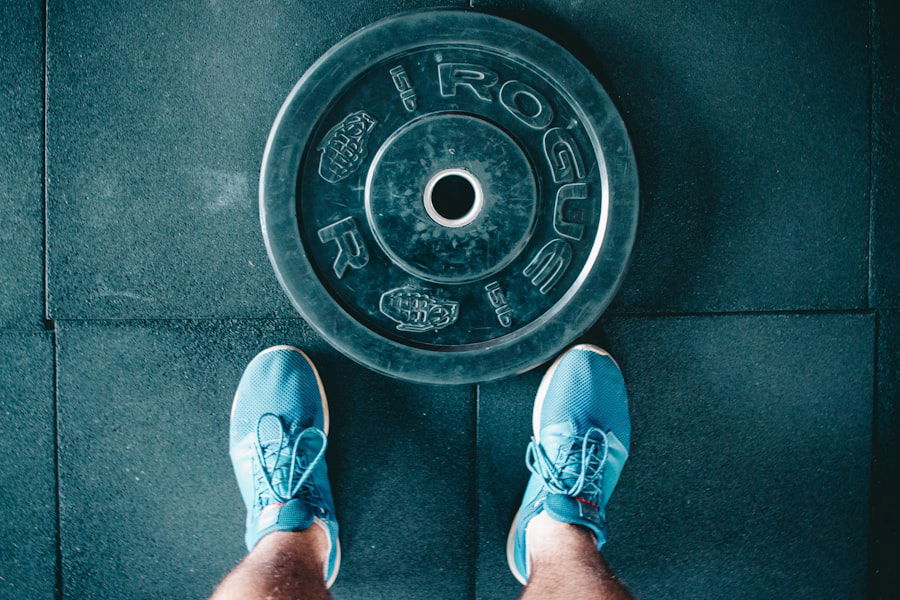Adaptive training is essential for Paralympians, enabling them to customize their fitness routines to address their specific requirements and capabilities. Paralympians often face physical limitations that necessitate a specialized approach to training, taking into account their unique challenges and abilities. This tailored approach not only enhances physical fitness but also bolsters confidence and mental resilience.
By personalizing their training programs, Paralympians can strive to reach their full potential and compete at elite levels. Adaptive training also plays a crucial role in injury prevention for Paralympians. Due to their disabilities, these athletes may be more prone to certain types of injuries.
Adaptive training helps strengthen vulnerable muscles and joints, focusing on exercises that improve stability, balance, and flexibility. This approach reduces the risk of injury and helps maintain optimal physical condition. Furthermore, adaptive training aids in more effective injury recovery by targeting specific areas of weakness and providing a safe, supportive environment for rehabilitation.
In summary, adaptive training is vital for Paralympians to optimize performance, prevent injuries, and overcome the unique challenges associated with being athletes with disabilities.
Key Takeaways
- Adaptive training is crucial for Paralympians to optimize their performance and overcome physical limitations.
- Strength and endurance training are essential for Paralympians to build muscle and improve cardiovascular health.
- Specialized equipment and technology play a key role in enhancing the fitness regimens of Paralympian athletes.
- Nutrition and diet plans are tailored to meet the specific needs of Paralympians, supporting their energy levels and recovery.
- Mental and emotional training are important for Paralympians to develop resilience and maintain a positive mindset in the face of challenges.
- Recovery and injury prevention strategies are vital for Paralympian athletes to stay healthy and avoid setbacks in their training.
- The future of Paralympian fitness will see continued innovations and advancements in training techniques, equipment, and technology.
Strength and Endurance Training for Paralympians
Building Strength for Success
Building strength is essential for Paralympians to overcome the physical challenges posed by their disabilities and excel in their respective sports. By focusing on strength training, Paralympians can improve their muscle mass, power, and overall physical performance. This is particularly important for athletes with lower limb impairments, as they rely heavily on upper body strength to propel themselves in sports such as wheelchair racing and basketball.
Endurance Training for Peak Performance
Endurance training is equally important for Paralympians, as it enables them to sustain high levels of physical exertion over extended periods of time. This is crucial for sports like cycling, swimming, and long-distance running, where athletes need to maintain a steady pace and push their bodies to the limit.
Specialized Exercises and Equipment
In addition to traditional strength and endurance training, Paralympians often incorporate specialized exercises and equipment into their fitness regimens. For example, athletes with visual impairments may use auditory cues or tactile feedback to guide their movements during strength and endurance training. Similarly, athletes with limb impairments may use adaptive equipment such as resistance bands, hand cycles, or prosthetic limbs to target specific muscle groups and improve their overall physical fitness.
By combining traditional training methods with specialized exercises and equipment, Paralympians can develop the strength and endurance they need to compete at the highest level and achieve their athletic goals.
Specialized Equipment and Technology in Paralympian Fitness Regimens

Specialized equipment and technology play a crucial role in the fitness regimens of Paralympian athletes. Unlike able-bodied athletes, Paralympians often require adaptive equipment to accommodate their disabilities and optimize their training programs. This can include a wide range of specialized gear such as prosthetic limbs, wheelchairs, hand cycles, and adaptive sports equipment.
These tools enable Paralympians to engage in strength training, endurance exercises, and sport-specific drills that are tailored to their individual needs and abilities. Additionally, advancements in technology have led to the development of innovative training aids such as exoskeletons, robotic prosthetics, and motion capture systems that help Paralympians improve their physical fitness and performance. Moreover, specialized equipment and technology are essential for injury prevention and rehabilitation in Paralympian fitness regimens.
For example, athletes with spinal cord injuries may use functional electrical stimulation (FES) devices to activate paralyzed muscles and prevent muscle atrophy. Similarly, athletes with limb impairments may use custom orthotic devices or adaptive footwear to support their joints and reduce the risk of injury during training. By leveraging the latest advancements in sports science and technology, Paralympians can access a wide range of tools and resources that enable them to train effectively, stay healthy, and perform at their best.
As technology continues to evolve, the potential for innovation in specialized equipment for Paralympian fitness regimens is limitless.
Nutrition and Diet Plans for Paralympian Athletes
Nutrition and diet play a critical role in the performance and overall well-being of Paralympian athletes. Proper nutrition is essential for fueling the intense physical demands of training and competition, as well as supporting recovery and injury prevention. Paralympians require a well-balanced diet that provides the necessary nutrients to optimize their physical performance and maintain a healthy body composition.
This includes a focus on macronutrients such as carbohydrates, proteins, and fats, as well as micronutrients like vitamins and minerals that support overall health and athletic performance. In addition to a well-rounded diet, many Paralympians work with sports nutritionists to develop personalized nutrition plans that align with their specific needs and goals. This may involve adjusting macronutrient ratios to support muscle growth or weight management, as well as timing nutrient intake to optimize energy levels during training sessions and competitions.
Furthermore, some Paralympians may have dietary restrictions or special considerations based on their disabilities, which require careful planning and attention to ensure they receive adequate nutrition without exacerbating any existing health conditions. Overall, nutrition and diet plans are essential components of a Paralympian’s fitness regimen that directly impact their physical performance, recovery, and overall health.
Mental and Emotional Training for Paralympians
Mental and emotional training are integral aspects of a Paralympian’s fitness regimen that are often overlooked but equally important as physical training. The mental resilience required to overcome the challenges of living with a disability and competing at an elite level cannot be understated. Paralympians often face unique psychological stressors related to their disabilities, such as self-doubt, fear of failure, or societal stigma.
Mental training techniques such as visualization, goal setting, mindfulness, and cognitive-behavioral strategies can help Paralympians develop the mental toughness needed to navigate these challenges and perform at their best. Furthermore, emotional training is essential for helping Paralympians manage the psychological impact of their disabilities and maintain a positive mindset throughout their athletic journey. This may involve working with sports psychologists or mental health professionals to address issues such as anxiety, depression, or trauma related to their disabilities or athletic experiences.
By prioritizing mental and emotional well-being alongside physical fitness, Paralympians can cultivate a strong sense of self-confidence, resilience, and motivation that empowers them to overcome adversity and achieve success in their athletic pursuits.
Recovery and Injury Prevention for Paralympian Athletes

Recovery and injury prevention are critical components of a Paralympian’s fitness regimen that directly impact their ability to train consistently and perform at a high level. Due to the unique physical demands placed on their bodies, Paralympians are at an increased risk of certain types of injuries related to their disabilities. Therefore, prioritizing recovery strategies such as rest, hydration, massage therapy, and active recovery exercises is essential for managing fatigue, reducing muscle soreness, and preventing overuse injuries.
Additionally, injury prevention techniques such as proper warm-up protocols, mobility exercises, strength training for stabilizing muscles, and biomechanical assessments are crucial for minimizing the risk of acute injuries during training and competition. Many Paralympians also work with physical therapists or sports medicine professionals to address any underlying musculoskeletal imbalances or movement dysfunctions that may predispose them to injury. By implementing comprehensive recovery and injury prevention strategies into their fitness regimens, Paralympians can maintain optimal physical health and performance throughout their athletic careers.
The Future of Paralympian Fitness: Innovations and Advancements
The future of Paralympian fitness is ripe with potential for innovations and advancements that will continue to elevate the capabilities of athletes with disabilities. As technology continues to evolve, there is an increasing focus on developing cutting-edge equipment such as advanced prosthetics, exoskeletons, adaptive sports gear, and wearable technology that enhance the physical abilities of Paralympians. These innovations not only improve performance but also expand opportunities for individuals with disabilities to engage in physical activity and competitive sports.
Furthermore, advancements in sports science research are leading to a deeper understanding of the unique physiological adaptations that occur in response to disability-specific training regimens. This knowledge is driving the development of specialized training protocols tailored to the needs of different disability classifications within the Paralympic movement. Additionally, there is growing recognition of the importance of mental health support for Paralympians, leading to increased access to sports psychology services and mental wellness programs that address the specific psychological challenges faced by athletes with disabilities.
In conclusion, the future of Paralympian fitness is bright with potential for continued growth and advancement in adaptive training methods, specialized equipment, nutrition strategies, mental resilience techniques, recovery protocols, injury prevention strategies, and technological innovations. As these advancements continue to unfold, they will undoubtedly contribute to the ongoing success of Paralympian athletes on the world stage while promoting inclusivity and accessibility within the realm of adaptive sports.
If you’re interested in learning more about managing stress, you may want to check out this article on managing stress due to financial loss. It provides valuable insights into how individuals can cope with the emotional and psychological impact of financial setbacks. This can be particularly relevant for athletes who may face financial challenges as they pursue their training and competition goals.
FAQs
What is the training regimen of a Paralympian like?
Paralympians follow a rigorous training regimen that includes strength training, cardiovascular exercises, flexibility training, and sport-specific skill development. They work with coaches and trainers to create personalized workout plans to improve their performance in their respective sports.
How do Paralympians adapt their training to their specific disabilities?
Paralympians work with specialized trainers and physical therapists to adapt their training regimens to their specific disabilities. This may involve using adaptive equipment, modifying exercises, and focusing on areas of the body that can compensate for limitations in other areas.
What are some common fitness challenges that Paralympians face?
Paralympians may face challenges related to mobility, balance, coordination, and muscle strength. They often need to develop creative solutions to overcome these challenges and achieve their fitness goals.
How do Paralympians maintain their mental and emotional well-being during training?
Paralympians often work with sports psychologists and mental health professionals to develop strategies for maintaining their mental and emotional well-being during training. This may include visualization techniques, mindfulness practices, and stress management strategies.
What role does nutrition play in the training regimen of a Paralympian?
Nutrition plays a crucial role in the training regimen of a Paralympian. They work with dietitians to develop meal plans that support their training goals, promote recovery, and optimize their overall health and performance.
